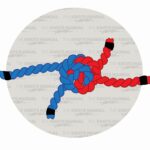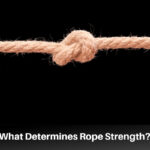The Flat Overhand Bend is one of the weakest knots for connecting two ropes together. It joins two ropes in a way where both ropes enter the knot from the same direction. Despite its weakness, it’s very commonly used in climbing due to its ability to not get stuck on rocks.
Sometimes, this knot is also referred to as the One-Sided Overhand Knot, Offset Overhand Knot, European Death Knot (EDK), Thumb Knot, or Openhand Knot.
Quick Guide: How to Tie a Flat Overhand Bend Knot
The Flat Overhand Bend connects two ropes using a simple Overhand Knot.
To tie this knot, place the working ends of both ropes next to each other. After that, make a closed loop with them and take both ends of the ropes through this loop.
It’s important to tighten this knot correctly when used in critical applications like climbing. Make sure that the two ropes stay parallel to each other inside the knot and don’t cross each other. Tighten the knot by pulling both ropes separately and then together.
When used in climbing for connecting two ropes, the knot can support body weight. But it can roll and capsize when put under extreme pressure. To account for rolling, it’s important to leave long enough ends after the knot – at least two hand lengths or 12 inches (30 cm).
For a more secure version, you can tie another Overhand Bend right after the finished knot. This version can support much higher loads, so it’s preferred by careful climbers. It’s often referred to as the Double Overhand Knot, but this name already belongs to another type of knot. So the correct way to refer to this would be to call it “Two Flat Overhand Bends”.
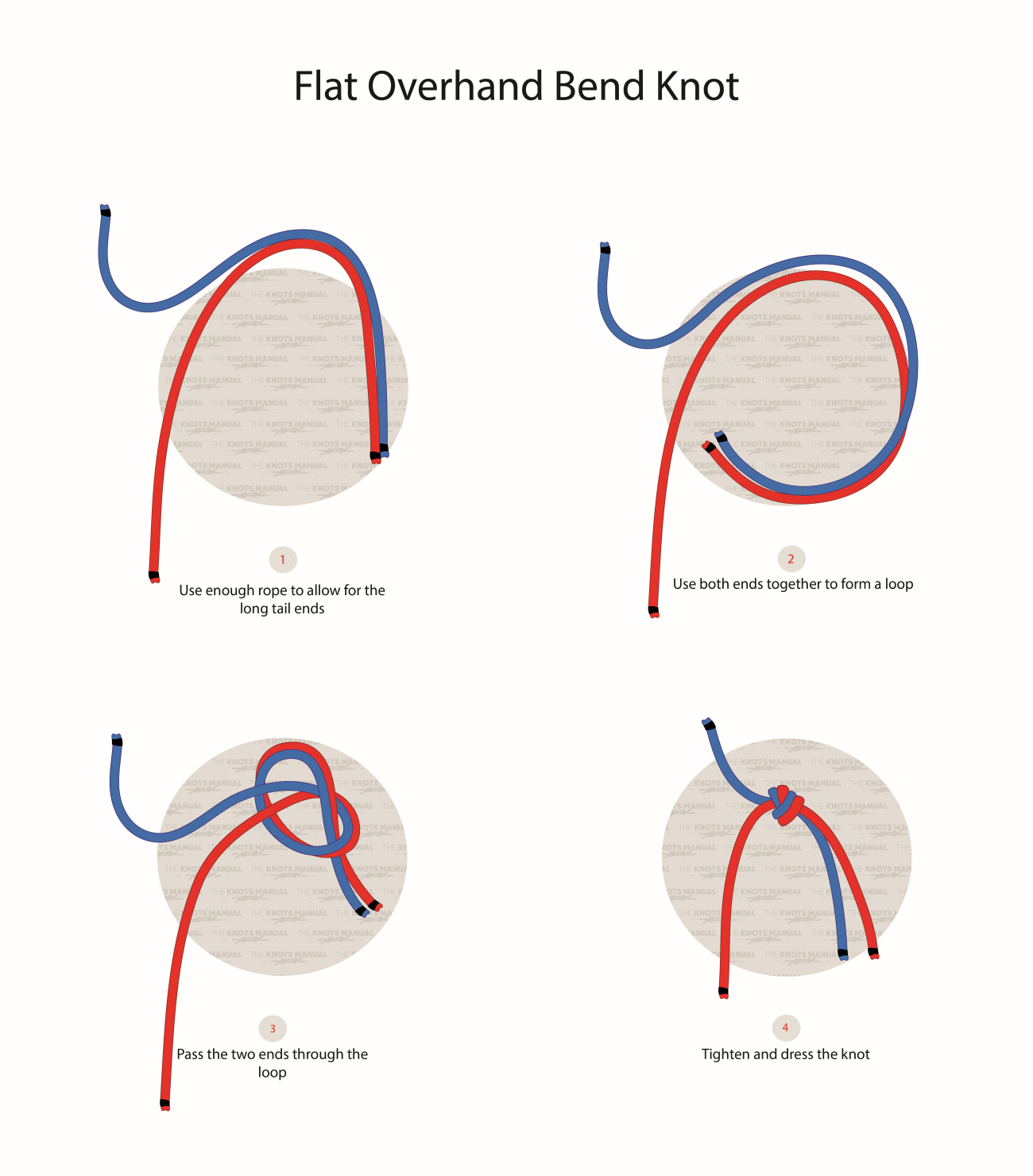
Pros and Cons of the Flat Overhand Bend Knot
The Flat Overhand Bend is very easy to tie and check. The knot should form two sets of parallel ropes on one side and one set on the other. It’s very beginner-friendly because everyone knows how to tie an overhand knot.
It’s also very easy to untie. Under extreme pressure, the Flat Overhand Bend can jam, but it’s still easier to untie than other bend knots.
The main reason why this is the most used knot in climbing for connecting two ropes is that the ropes enter the knot from the same direction. This makes them less likely to get stuck between rocks when repelling because the knot rolls over the rock.
The main downside to the Flat Overhand Bend is that it’s a very weak knot. In the past, it was only used for simple tasks, like hanging meat. But when tied correctly, it’s strong enough to support body weight for rock climbing.
Under extreme pressure, this knot rolls and capsizes. But with each roll, the strength of the knot is improved and further rolls need a higher force. That’s why when used in climbing, you have to leave rather long ends after the knot to account for this.
Another downside is that this knot is much weaker when tied incorrectly. If the ropes cross each other or it isn’t properly tightened, they can fail under body weight, which can in turn cause the death of climbers. It also doesn’t work very well in icy conditions and with very slippery ropes.
The Flat Overhand Bend can also be tied incorrectly. By making another turn before going through the loop, you can tie a Flat Figure 8 Knot, which is much weaker than the Flat Overhand Knot. This mistake has caused several accidents and deaths among climbers.
You shouldn’t leave the working end after the knot too long. This can cause the climber to mistake the free end for the actual rope, and clipping into it can result in a fatality.
What the Offset Overhand Bend Is Used For
Most commonly, the Offset Overhand Bend is used in rock climbing, mountaineering, search and rescue, and caving for connecting two ropes.
But you can also use it in other applications, where the strength of the knot isn’t too important. This knot is used by arborists, survivalists, and in weaving for connecting two strands.
Knots Like the Flat Overhand Bend
Fisherman’s Knot: This knot offers a more secure way of connecting two ropes together. It’s also formed using overhand knots, by tying two overhand in opposite directions around the other rope. It’s mainly used for connecting fishing lines.
Double Fisherman’s Knot: This knot is a more secure version of the Fisherman’s knot because it’s made of two opposite Double Overhand Stopper Knots. It’s also used in climbing because it’s much more secure than the Flat Overhand Bend.
Figure 8 Bend (Flemish Bend): Another secure bend knot, formed using a Figure 8 Knot. This knot is often secured with extra Double Overhand Stopper Knots on each side. In this variation, it’s the most secure way of connecting two ropes together for climbing.
Zeppelin Bend: Another secure bend knot used for connecting two ropes. It’s difficult to tie but very easy to untie.
Nail Knot: This bend knot is usually used to permanently connect two ropes. It’s one of the strongest bend knots but also difficult to untie.
In-Depth Guide: How to Tie the European Death Knot
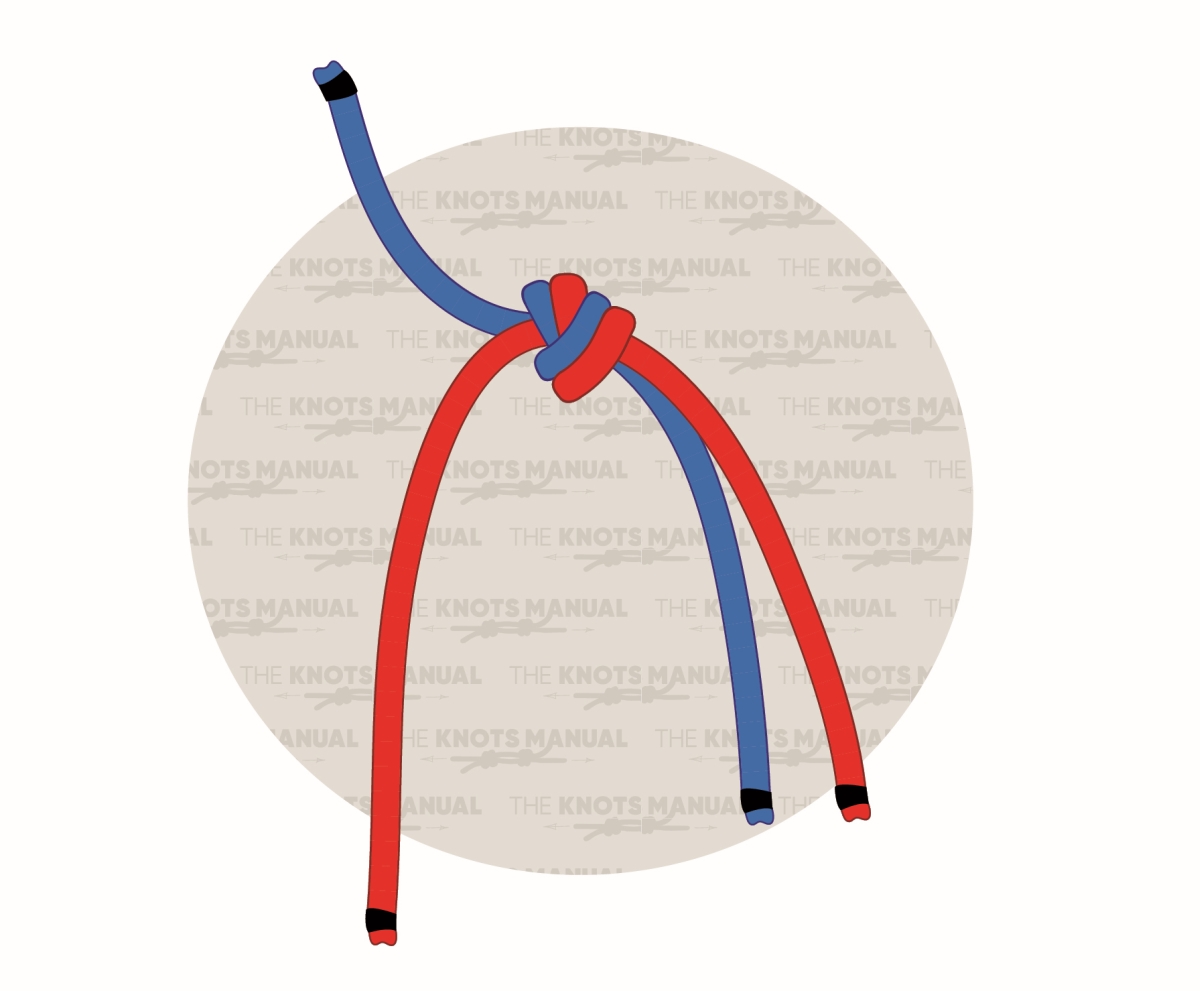
Step-by-step instructions on how to tie the Euro Death Knot.
Step 1:
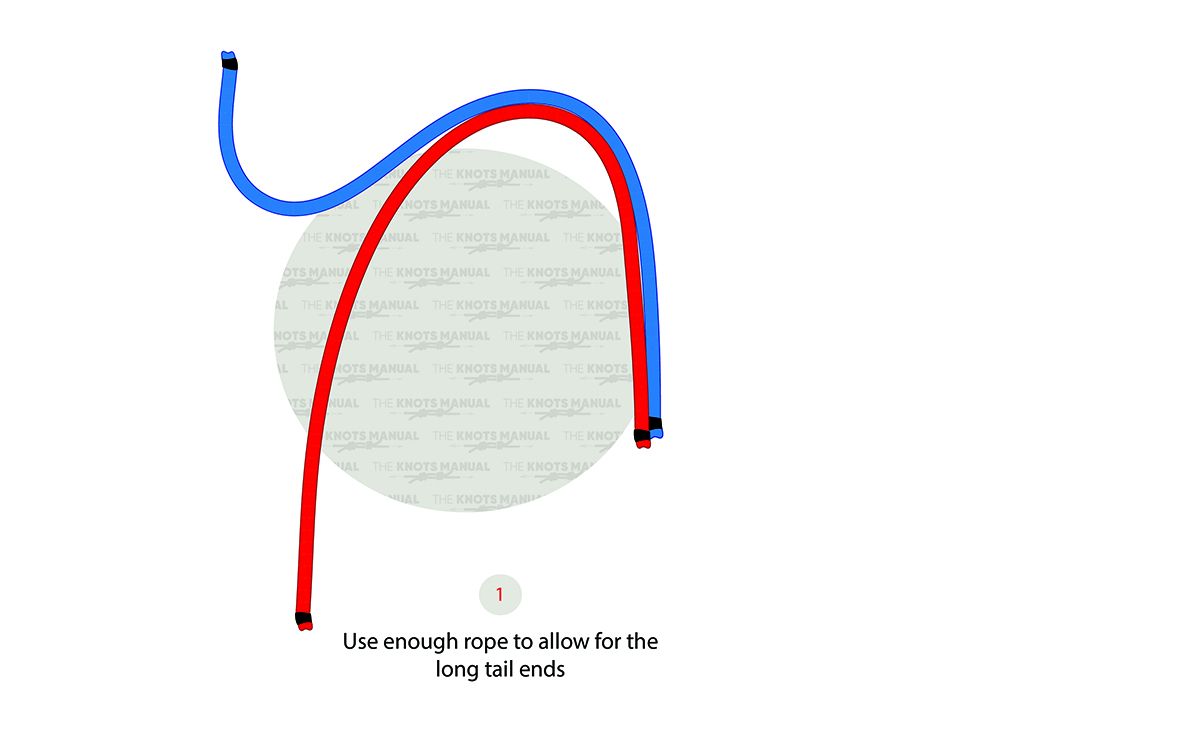
Start by placing the ropes next to each other.
Step 2:
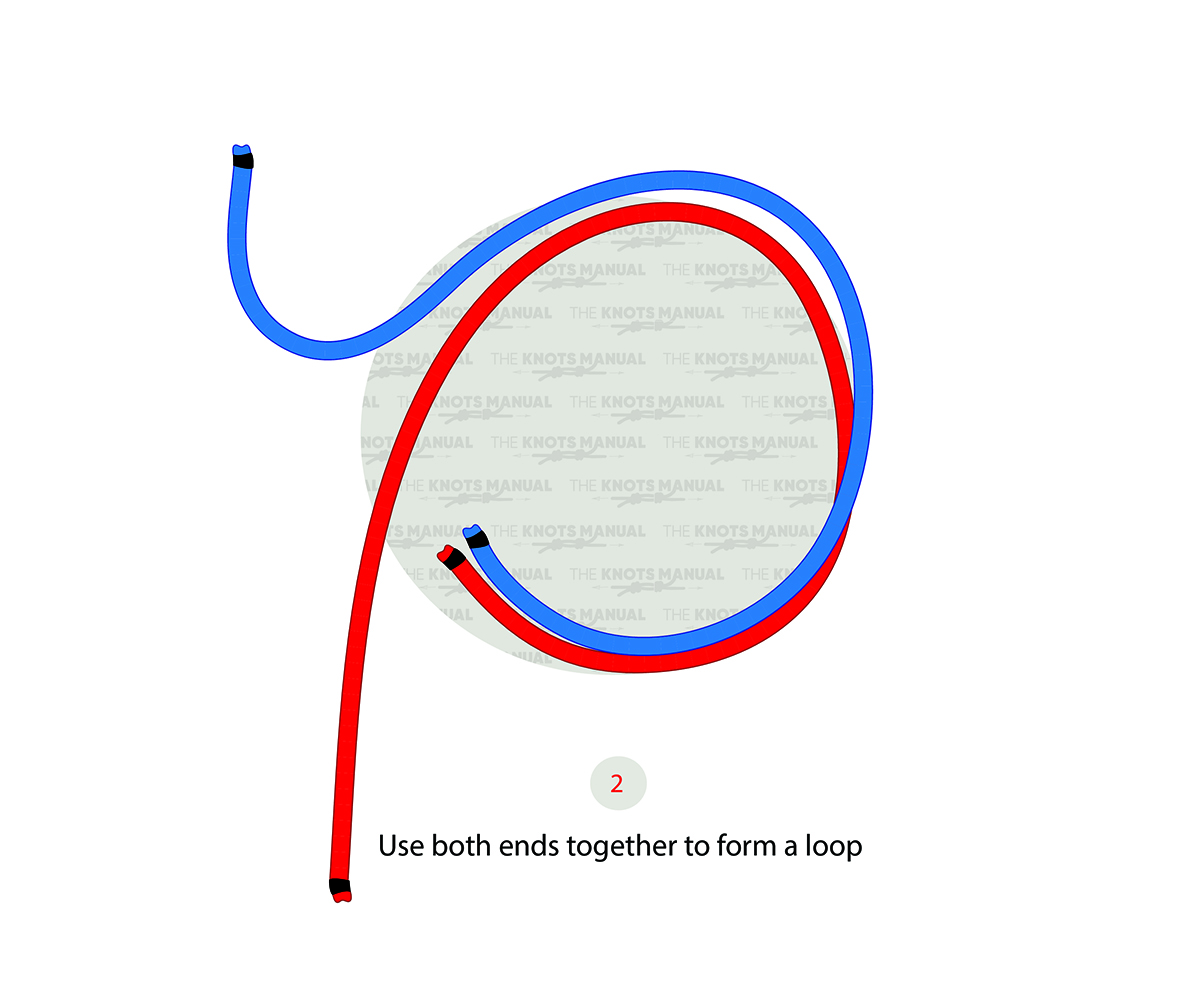
Form a closed loop using the two ropes.
Step 3:
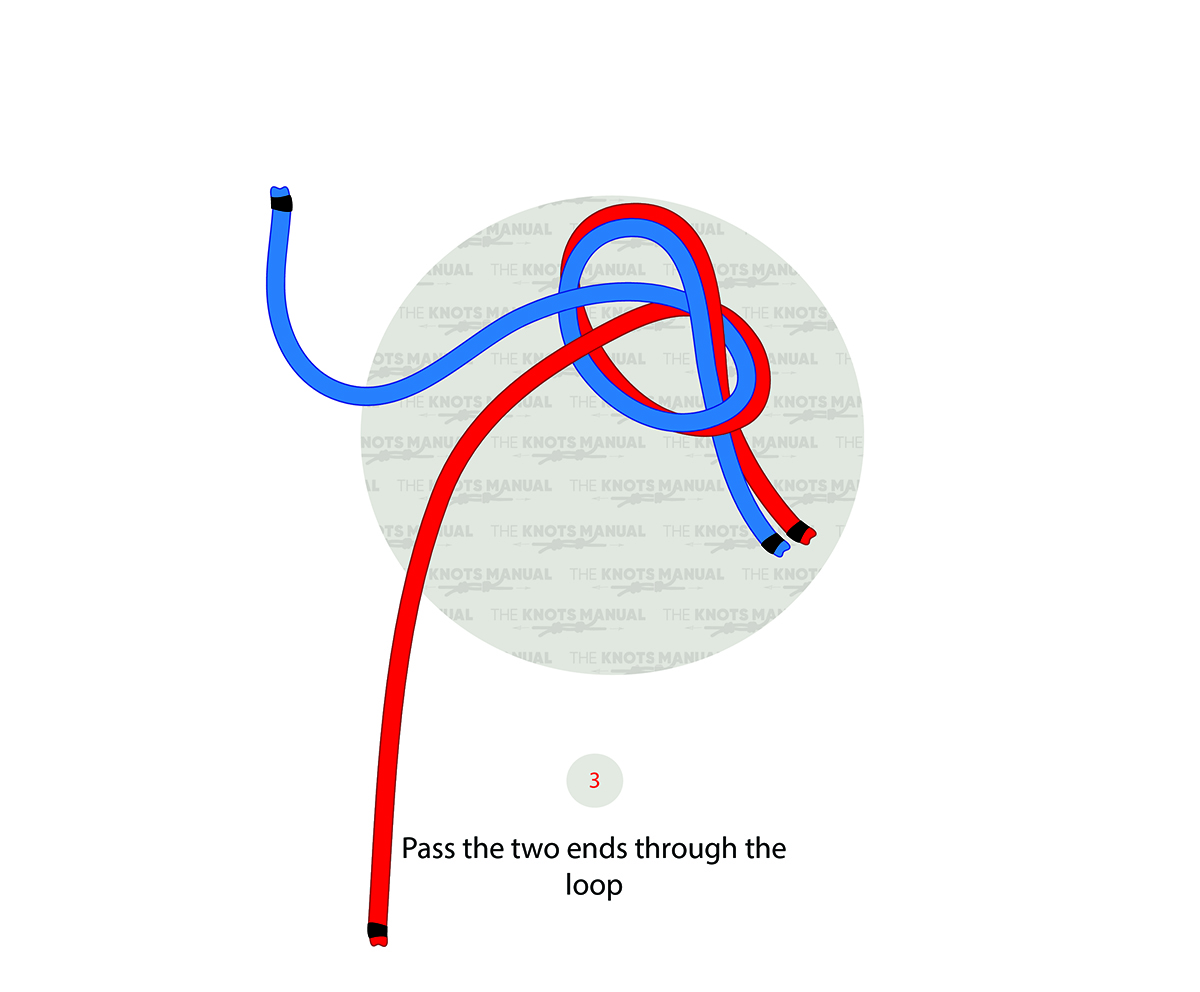
Take the working ends through the loop that you formed.
Step 4:
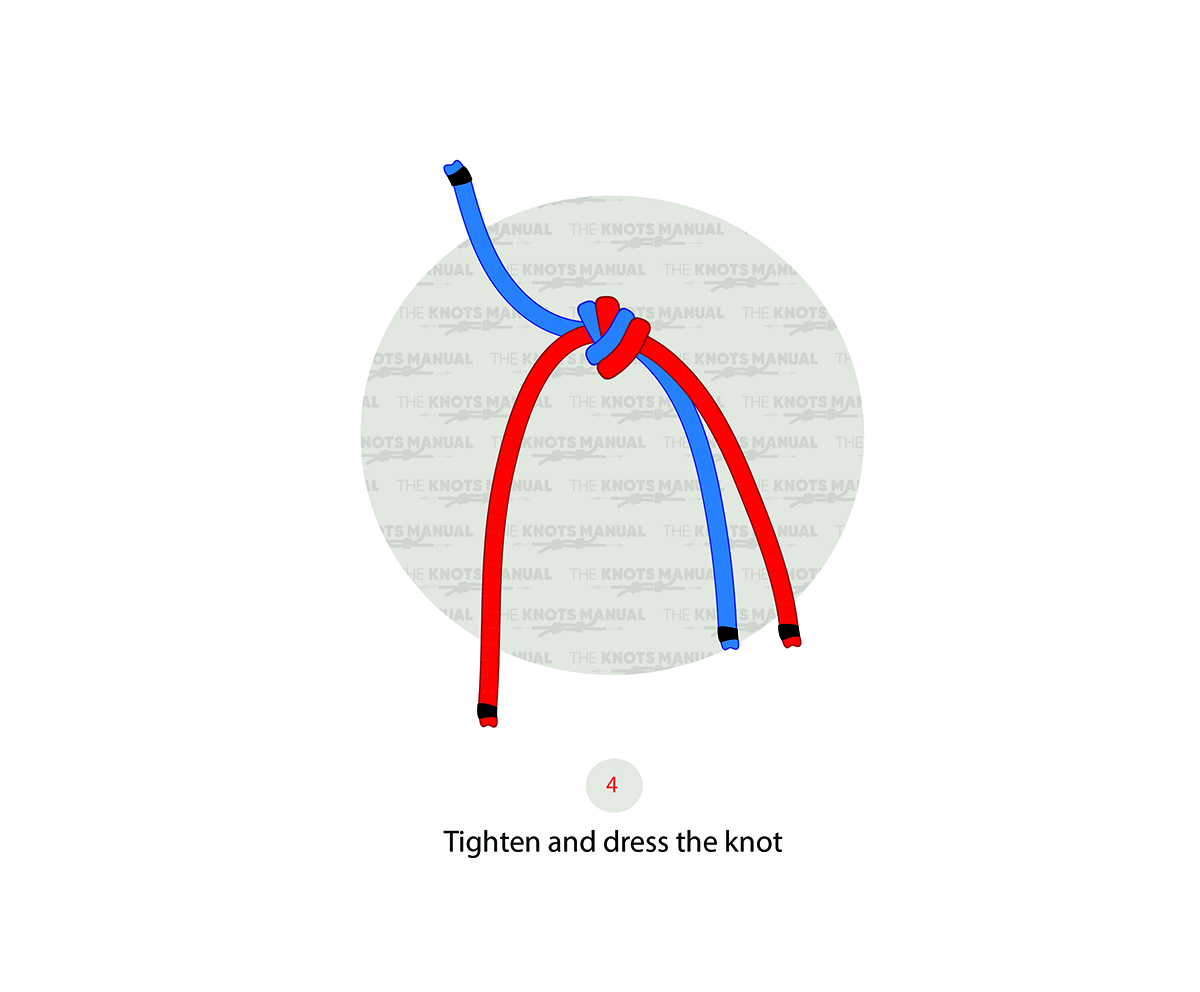
Tighten very tightly, making sure that the ropes don’t cross each other. For critical loads, leave at least two hand lengths of rope after the knot to account for rolling under extreme force.
Frequently Asked Questions
How Strong Is the Flat Overhand Bend?
A correctly tightened and dressed Flat Overhand Bend is strong enough to support the body weight of climbers.
Can the European Death Knot Fail?
The European Death Knot can fail in three ways. The first one is if the knot isn’t tightened and dressed correctly. In this instance, it can fail under body weight.
The other one is if there isn’t enough rope left after the knot. Under pressure, the European Death Knot will roll and capsize. You must account for it with at least two hand lengths of rope after the knot.
The last way that this knot can fail is if the ends after the knot are left too long. Climbers can then mistake the ends for the actual rope and clip into them.
Why Is the Flat Overhead Bend Called the European Death Knot?
The are no clear origins of the European Death Knot name. But it most likely originated in America because of the incorrectly tied version – the Flat Figure 8 Knot. This knot has caused many climbing deaths and is very similar to the Flat Overhand Bend.

